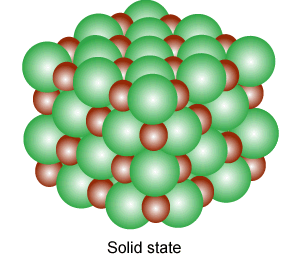Vacant Space in a body centered cubic lattice unit cell is about
Vacant Space in a body centered cubic lattice unit cell is about
- 23%
- 32%
- 46%
- 10%
The Correct Option is B
Approach Solution - 1
"To determine the vacant space in a BCC lattice unit cell, we need to consider the arrangement of atoms or ions and the spaces left between them.
In a BCC lattice, each lattice point is occupied by an atom or ion, and there is a vacant space in the center of the unit cell. This vacant space is often referred to as an octahedral void.
The volume of the octahedral void is equal to the volume of one atom or ion. In a BCC lattice, the volume occupied by the atoms or ions is equal to the volume of the eight atoms or ions at the corners plus the volume of the one atom or ion at the center.
Therefore, the vacant space in a BCC lattice unit cell is given by: Vacant space = (Volume of octahedral void) / (Total volume of the unit cell) * 100
Since the volume of the octahedral void is equal to the volume of one atom or ion, and the total volume of the unit cell is the sum of the volumes of the atoms or ions at the corners and the center, we can calculate the vacant space.
The vacant space in a BCC lattice unit cell is approximately 32% (option B)."
Approach Solution -2
Vacant Space in a Body Centered Cubic (BCC) Lattice
In a Body Centered Cubic (BCC) unit cell, atoms are arranged such that:
- There is one atom at each corner of the cube (8 corners × 1/8 = 1 atom)
- One atom is at the center of the cube (1 atom)
Total atoms per unit cell = 2
The packing efficiency (the percentage of volume occupied by atoms) in a BCC structure is approximately 68%.
Therefore, the vacant space = 100% − 68% = 32%
Correct Answer: 32%
Top Questions on The solid state
- A metal crystallizes in simple cubic lattice. The volume of one unit cell is \( 6.4 \times 10^{-7} \, \text{pm}^3 \). What is the radius of the metal atom in pm?
- AP EAPCET - 2025
- Chemistry
- The solid state
- A metal crystallises in two cubic phases, fcc and bcc with edge lengths 3.5 Å and 3 Å respectively. The ratio of densities of fcc and bcc is approximately
- TS EAMCET - 2025
- Chemistry
- The solid state
- How many kinds of Bravais lattice are possible in a crystal?
- Bihar Board XII - 2025
- Chemistry
- The solid state
- The percentage of free space in a body-centred cubic unit cell is
- Bihar Board XII - 2025
- Chemistry
- The solid state
- The number of atoms present in body-centred cubic unit cell is
- Bihar Board XII - 2025
- Chemistry
- The solid state
Questions Asked in KCET exam
- If the number of terms in the binomial expansion of \((2x + 3)^n\) is 22, then the value of \(n\) is:
- KCET - 2025
- Binomial theorem
- Ethyl alcohol is heated with concentrated sulphuric acid at 413 K (140°C). The major product formed is
- KCET - 2025
- Organic Chemistry
- A body of mass 0.25 kg travels along a straight line from \( x = 0 \) to \( x = 2 \, \text{m} \) with a speed \( v = k x^2 \) where \( k = 2 \, \text{m}^{-1} \). The work done by the net force during this displacement is
- KCET - 2025
- Elastic and inelastic collisions
- A square loop of side 2 m lies in the Y-Z plane in a region having a magnetic field \(\mathbf{B} = (5 \hat{i} - 3 \hat{j} - 4 \hat{k}) \, \text{T}\). The magnitude of magnetic flux through the square loop is
- KCET - 2025
- Magnetic Field
- A random experiment has five outcomes \(w_1, w_2, w_3, w_4, w_5\). The probabilities of the occurrence of the outcomes \(w_1, w_2, w_4, w_5\) are respectively \( \frac{1}{6}, a, b, \frac{1}{12} \) such that \(12a + 12b - 1 = 0\). Then the probabilities of occurrence of the outcome \(w_3\) is:
- KCET - 2025
- Probability
Concepts Used:
Solid State
Solids are substances that are featured by a definite shape, volume, and high density. In the solid-state, the composed particles are arranged in several manners. Solid-state, in simple terms, means "no moving parts." Thus solid-state electronic devices are the ones inclusive of solid components that don’t change their position. Solid is a state of matter where the composed particles are arranged close to each other. The composed particles can be either atoms, molecules, or ions.

Types of Solids:
Based on the nature of the order that is present in the arrangement of their constituent particles solids can be divided into two types;
- Amorphous solids behave the same as super cool liquids due to the arrangement of constituent particles in short-range order. They are isotropic and have a broad melting point (range is about greater than 5°C).
- Crystalline solids have a fixed shape and the constituent particles are arranged in a long-range order.